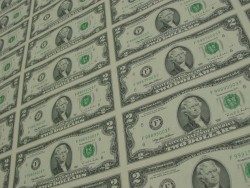Guest Post: by ‘Be Informed’
I came up with a 20 question and 100 point quiz to those that are considering moving to a new place to help gauge whether the places someone is thinking about is best for them. While this is geared to the survivalist, it is also suitable to test an area and place being suited for the non-survivalist people and their family to relocate to. This also assumes that people and their family have enough money or have pooled money together with others to move and purchase property of some sort. See if it DOES all add up?
Ratings are from 0 to 5 and will be added together on all 20 questions to get a grand total to weigh in to.
For the following questions score the following; 0 for absolutely no, 1 for strong no, 2 for weak no, 3 for weak yes, 4 for strong yes, 5 for absolutely yes.
1. Is the climate you are considering moving to not too hot, not too cold, or is the weather okay enough for you and your family and not going to be a hardship on you and others with you? ________ out of 5 points.
Many people cannot physically take bad weather.
2. Are there good sources of reliable water? This can be from the municipal water sources to clean rivers and streams, ponds, springs, etc.
_________ out of 5 points.
Water is an absolute necessity to live, and if the power is gone and no water comes from the tap, you must have some source of water. Good quality water from city sources is another issue that has to be considered.
3. Is the new location, state or even foreign country, friendly or at least not hostile towards you? _________ out of 5 points.
This is extremely important to not go to somewhere that you are going to be hated. Even in your own country there are places that you just will not fit in because of beliefs, the way you look, whatever. There are places also that are very non-respective to the survivalist mentality, such as very harsh laws against owning guns or prohibiting ‘unsightly’ items to the community such as windmills that generator power.
4. Is there good access to wild food such as natural vegetables and plants, berries and fruit, hunting available? Are there good outdoor activities available most of the year? _________ out of 5 points.
It is always good to have a back-up food source you can get to in case there are no more deliveries to the supermarket and your food supply runs out. It is also nice to be able to keep yourself from indoor boredom by being able to get outside once in awhile.
5. Is the new location a place where you can remain employed or can you be self employed, or do you have enough money to get by for at least 1 year, preferably 2 or more years until either something happens or you can find something to bring money in? ________ out of 5 points.
Having enough money to pay for survival until something happens is essential and should be considered greatly.
6. Is the new area safe or safer from where you are moving, from to natural hazards such as earthquakes, wildfires, tornadoes, hurricanes, even poisonous or dangerous animals? ________ out of 5 points.
Natural hazards are expensive to prepare for and to recover from, even families with small children have to think about the problem of wild animals that can do a lot of damage to small children, even in their own backyards.
7. Are you far enough away from danger spots; high priority military targets to enemy forces, terrorist hot spots, suspect nuclear power plants, toxic waste sites, etc. ________ out of 5 points.
This is not as crazy as it sounds, just look at the Fukushima situation and the possibility of war in the future as examples.
8. Is the new home private enough for you and your family. Are you going to be safe from eyes watching you? _______ out of 5 points.
If you are storing up food and water and other supplies, you do not want too many people knowing this. Besides this, who wants snooping neighbors?
9. Is the new home and property a place you can get out quickly from if you need to, This includes being able to resell the property as quickly as possible if you have to. ________ out of 5 points.
This is something you have to think about, getting out if you have to because you made the “wrong decision” about where to move to.
10. Is your place big enough for you to store food, water, and supplies, and is there enough comfortable room for those people living there not to feel all cramped in? ________ out of 5 points.
Small living for some is all right, but for most it is not fun to be bumping into each other and what you have in the house.
11. Is the new place energy friendly. Can you put up wind power, solar, or some mill type power system driven by water? Is there enough sun for solar, enough constant wind, etc. Also are the costs of regular power and energy you get from companies inexpensive enough? _______ out of 5 points.
A high gas and electric bill can really break the bank, and other sources of self generated power might not be possible in some places.
12. Are the property taxes, state income taxes, and general prices to live cheaper than from where you are moving from? ________ out of 5 points.
Money is an issue until it does not mean anything anymore and the cheaper you go the more of something else you can purchase.
13. Are you far enough from dense populated areas. It should be thought of as a minimum of 50 miles from highly populated areas as a guide to this.
________ out of 5 points.
People considering moving are usually trying to get away from all the problems of modern society, this is getting away from the congestion and highly populated places. Most of the worst problems are in big cities.
14. Are you and your family members psychologically up to the big move and changes to your life styles all of you have been accustomed to. Are you prepared to leave behind friends and family? ________ out of 5 points.
For many people that stay in very undesirable areas they just cannot leave what they are used to behind. This is something to think about, is your life going to be safer and better and “is it worth it”?
15. If nothing happens for a long time where you move to and things are not what you planned for, are you willing to stick it out and stay put for at least awhile? ________ out of 5 points.
Many people leave somewhere too soon because things are not what they expected. There are many survivalists that might come back after a couple of years to the big city because the SHTF has not occurred on their schedule. When you move somewhere it should be kind of a sure thing, otherwise reconsider where you are going. This can also be unprofitable if you sell out at the wrong time.
16. Are the inconveniences such as isolation, long drives to get to the market, interruptions of services such as electricity or communications, and other pains something that you can overcome? ________ out of 5 points.
People that move will often find many of the expected services that they become use to no longer as dependable.
17. Are you and others with you ready and can cope with cultural shock, the differences and transition to what is likely going to be different and perhaps difficult to adapt to? _______ out of 5 points.
This can be a lot more difficult to deal with than people think.
18. Do you and your family and even friends with you actually like and personally feel safer where you’re planning to go to? Call it intuition and insight? ________ out of 5 points.
When you feel good about where you are going it sure helps the move and the switch to a new life.
19. What is the cost of maintaining the property, the physical work involved, how time consuming. For much hard work and high cost put down 0 to for little work and minimal cost 5. Anything between high cost and much work and little cost and work use 1, 2, 3, or 4. _______ out of 5 points.
Someone can take a rundown shanty and turn it into something liveable, but it is going to cost in money and back breaking work. For some people this is something of a challenge and enjoyed, to most it is a major headache.
20. Lastly, is the growing season. For 89 days or less put down 0, for 90-119 days put down 1, for 120-180 days put down 2, for 181-240 days put down 3, for 241-300 days put down 4, and for 301 days or more put down 5.
_______ out of 5 points.
Growing your own food is essential for anyone planning to survive bad times and the longer you can grow food, the longer without frost, the more food you can grow and the more room and time for replanting crops you have that do not succeed at first. A Longer growing season also has to do with the weather, so that you and your family can spend more time outside.
Now add up all 20 of the questions and get a grand total. Now see where your plans to move, rate from the descriptions below.
90-100 points, this is the place for you, go for it.
80-89 points, this is a really good choice and probably you and your family will be able to overcome the minor problems with time.
70-79 points, this has more problems and there are probably a few better places to go, but this would still not be a bad choice.
60-69 points, this is getting into the category in which you should reconsider this choice unless other family members have their sights set on this place. Probably many other places are better rated for you than here.
50-59 points, honestly you can do better for yourself, keep plugging in other places to find somewhere better.
49 points or less, forget it, you and your family can most definitely do better.
This is a guide of course and you can add other important issues, but this should give you a pretty good non biased idea of where you are planning to go. Non biased because you do not know what the end score is going to be. When you are looking for a safe and or better place to live why not aim for the most ideal place you can find and can afford?
If you enjoyed this, or topics of preparedness or current events risk awareness, consider our survival blog RSS feed, new posts by E-mail, or bookmark us at Modern Survival Blog
Modern Survival Blog related posts








 Just as the Federal Reserve is winding down its $600-billion QE2 monetary stimulus program, the latest releases of U.S. financial data increasingly point to another slowdown in the American and global economies.
Just as the Federal Reserve is winding down its $600-billion QE2 monetary stimulus program, the latest releases of U.S. financial data increasingly point to another slowdown in the American and global economies.